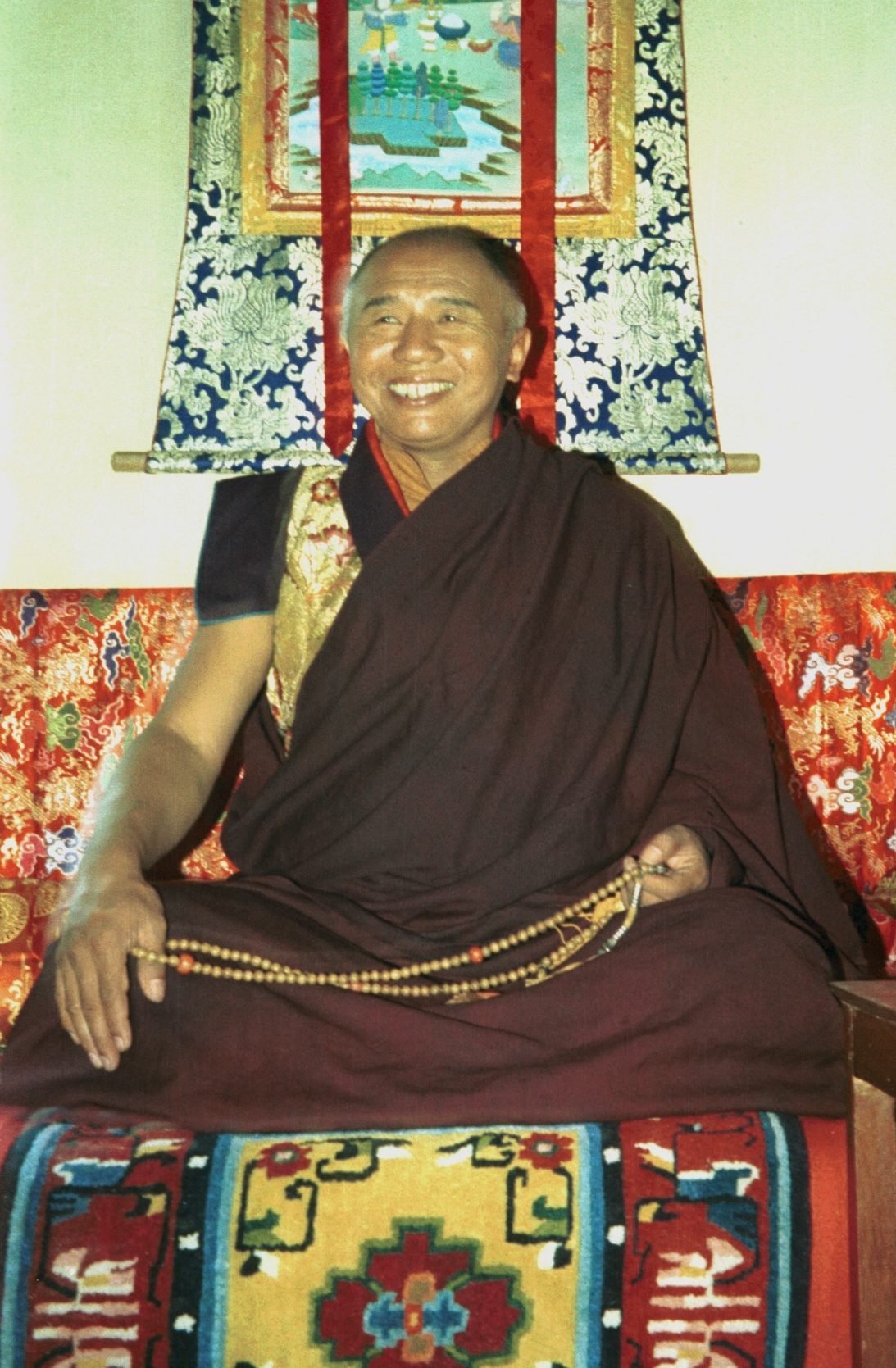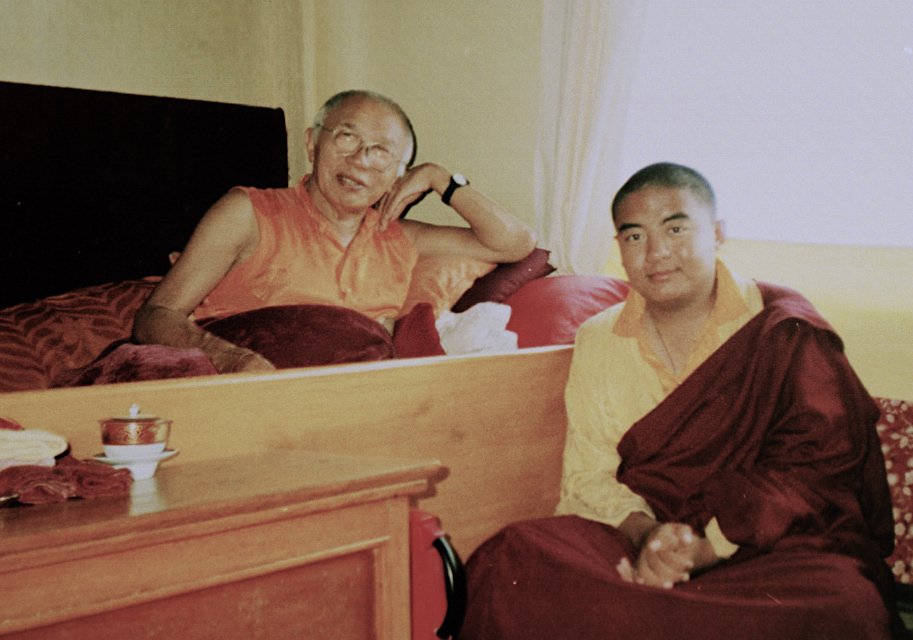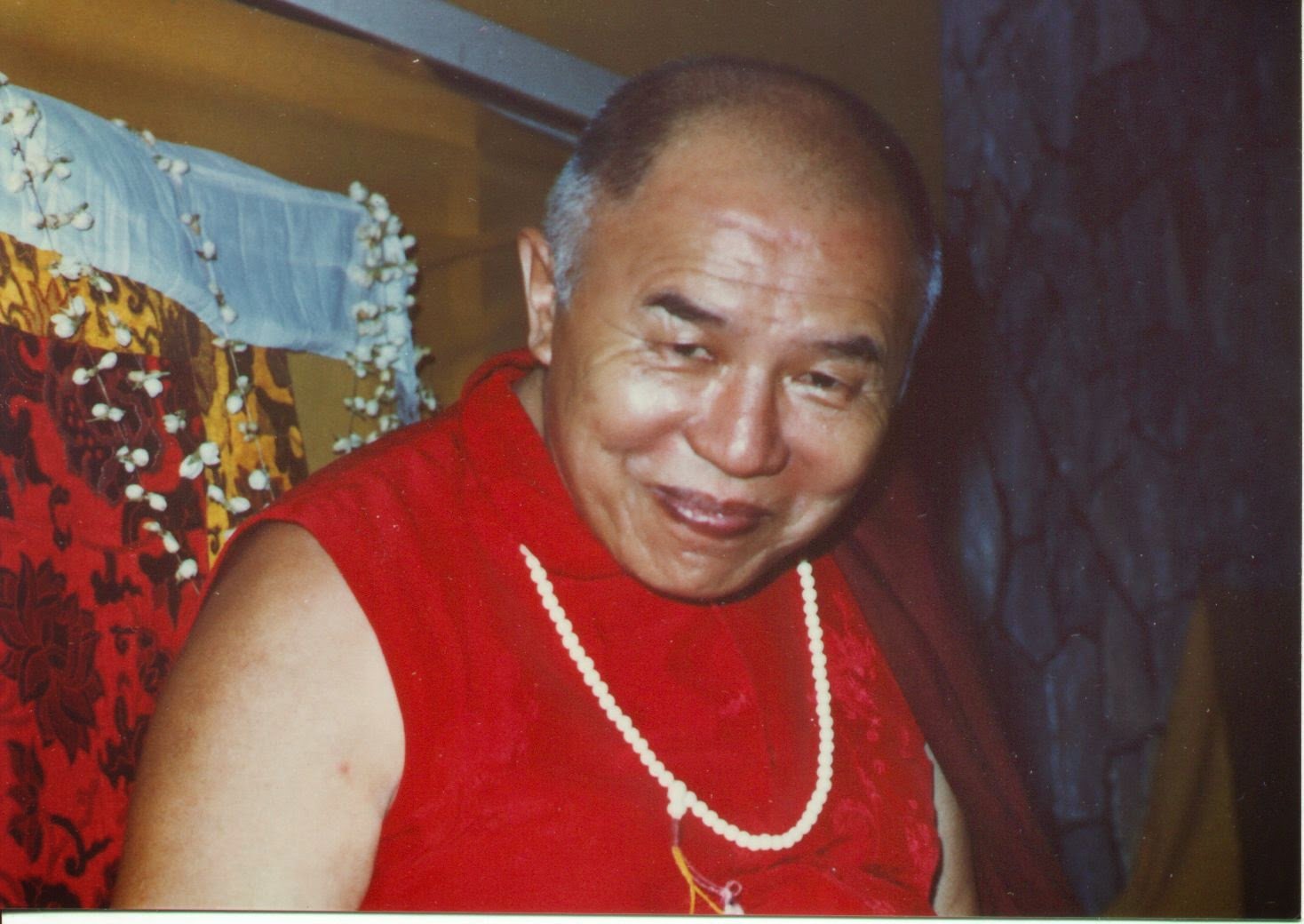
Tulku Urgyen Rinpoche
A twentieth-century lama bridging the Kagyu and Nyingma lineages, Tulku Urgyen Rinpoche (1920–1996) was considered one of the greatest meditation masters of his time. He taught meditation to people of all backgrounds and beliefs. His hallmark as a teacher was to begin with the teachings on the view of ultimate reality and then guiding his students to train in wisdom and compassion as expressions of the mind’s true nature of luminous purity.
Born in Nangchen in the eastern Tibetan province of Kham in 1920, Tulku Urgyen was recognized by the 15th Karmapa, Khakyab Dorje, as both the reincarnation of the Chowang Tulku (one of the five Terton Kings, the major revealers of secret texts hidden by Guru Padmasambhava) and an emanation of Nubchen Sangye Yeshe (one of Padmasambhava’s twenty-five principal students).
Tulku Urgyen began meditating when he was only four years old and, even at this young age, he had recognition of the nature of mind. Attending the teachings given by his father, Tsangsar Chime Dorje, he received transmissions of the Kangyur (the words of the Buddha) and the New Treasures of Chokgyur Lingpa. He later studied Dzogchen with his uncle, Tulku Samten Gyatso (the grandson of Chokgyur Lingpa), who became his main teacher.



Tulku Urgyen went on to study with many other lamas of both the Kagyu and Nyingma traditions. He drew great inspiration from Milarepa and Longchen Rabjam: on merely hearing their names, tears would come to his eyes. He spent most of his youth studying and practicing intensively, with Lachab Gompa in Nangchen as his home monastery.
Leaving Tibet after the Chinese occupation, Tulku Urgyen settled in Nepal at Nagi Gompa, a hermitage on the southern slope of Shivapuri Mountain above the Kathmandu Valley. In his thirty-three years at Nagi Gompa, he completed a total of two decades in retreat, including four three-year retreats. He restored many temples in the Kathmandu region and established six monasteries and retreat centers. The most notable of these are a Kagyu-Nyingma monastery (Ka-Nying Shedrub Ling) at the Great Stupa in Boudhanath and a retreat center at the Asura Cave, an important pilgrimage site where Padmasambhava practiced.
More than 300 monks and nuns came to study under Tulku Urgyen’s guidance. He transmitted the Dzogchen Desum teachings to such masters as Dudjom Rinpoche, Dilgo Khyentse Rinpoche, and the 16th Karmapa, as well as thousands of other disciples. He also reestablished several traditional annual prayer gatherings in exile.
In 1980, Tulku Urgyen began traveling internationally, giving teachings on Dzogchen and Mahamudra in Europe, the USA, and Southeast Asia. In his later years, when he traveled less frequently, many of his international students made the journey to Nepal to receive teachings. At Ka-Nying Shedrub Ling, he initiated a tradition of holding annual seminars combining the view and meditation of Dzogchen, Mahamudra, and Madhyamika. He de-emphasized the traditional systematic philosophical discourses in favor of spontaneous, pithy teachings that addressed the listener’s present state of mind directly. He achieved renown both for his profound meditative realization and for the concise, lucid, and humorous style with which he imparted the essence of Buddhist philosophy and practice in the context of his students’ personal experiences.
Tulku Urgyen authored several books in English, including Repeating the Words of the Buddha, Rainbow Painting, As It Is (Volumes 1 & 2), and Vajra Speech. He also supervised many English translations of Tibetan texts and gave the name Rangjung Yeshe to the publishing imprint established to make these and other Dharma works available worldwide.
He passed away peacefully at Nagi Gompa in 1996. His lineage is continued by his four sons, each of whom is now recognized as an important Buddhist master in his own right: Chökyi Nyima Rinpoche, Tsikey Chokling Rinpoche (deceased), Tsoknyi Rinpoche, and Mingyur Rinpoche.
The yangsi (young reincarnation) of Tulku Urgyen Rinpoche, named Urgyen Jigme Rabsel Dawa, was born in 2001 as the son of Neten Chokling Rinpoche and was discovered in 2006 by Kyabje Trulshik Rinpoche, the late head of the Nyingma lineage.

Nyoshul Khen Rinpoche
Nyoshul Khen Rinpoche (1932-1999) was a revered Tibetan meditation master, scholar, and poet, whose extraordinary presence and brilliant teaching style made a deep impact on the current generation of Tibetan lamas and on the transmission of Tibetan Buddhism to the West.



